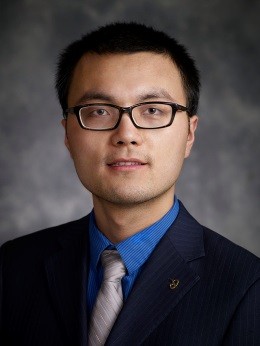全校师生:
我校定于2017年5月2日举办研究生灵犀学术殿堂——Zhenpeng Qin报告会,现将有关事项通知如下:
1.报告会简介
报告人:Zhenpeng Qin 副教授
时 间:2017年5月2日(星期二)下午15:00
地 点: 友谊校区 航天学院6号楼4楼研究生教室
主 题:Optically-triggered Compound Ultrafast Release to Study Real-time Brain Activity
内容简介:
Understanding how the brain controls behavior requires advanced tools to manipulate brain activity. Inspired by recent progress in optogenetics and caged compounds, the overall objective of our research seeks to develop a new set of tools that will allow localized and ultrafast control of brain activity to influence behavior without genetic modification. Briefly, our new technique involves using light stimulation to rapidly release compounds that are encapsulated in tiny nanometer-sized particles. Specifically, plasmonic gold-coated liposomes, i.e. plasmonic liposomes, consist of a liposomal core and a thin gold nanoparticle shell. Near-infrared laser pulse activates plasmonic liposomes to rapidly release the encapsulated compounds. We observed that near-infrared laser irradiation triggers the release of fluorescent dye from plasmonic liposomes within 0.1 ms and the release is highly dependent on laser pulse number and energy. Furthermore, we have demonstrated this capability using in vitro assays including regulating calcium signaling and neuron inhibition. Compared with other techniques including caged compound, this ultrafast near-infrared light-driven molecular release method is easily adaptable to deliver a wide range of bioactive molecules with an ultrafast optical switch, enabling new possibilities to investigate brain activities within individual neurons and neural networks.
2.欢迎各学院师生前来听报告。报告会期间请关闭手机或将手机调至静音模式。
党委研究生工作部
航天学院
2017年4月27日
报告人简介

Zhenpeng Qin is an assistant professor of Mechanical Engineering at The University of Texas at Dallas, with joint appointments in Bioengineering and Surgery (UT Southwestern Medical Center). He received his PhD and post-doctoral training in the Departments of Mechanical Engineering and Chemical Engineering, respectively, both at the University of Minnesota (2009 – 2014). Prior to Minnesota, he obtained a BS in Thermal and Power Engineering from Xi’an Jiaotong University (2007) and a MS in Mechanical Engineering from University of Akron (2009). His research interests center on the fundamental understanding of the nano-thermo-bio interface between nanoparticles and biomolecules (proteins and lipids) and applications of this knowledge to diagnose infectious disease diagnostics and understand the brain. He received external funding from the National Science Foundation (NSF), Cancer Prevention and Research Institute of Texas (CPRIT), UT seed grants, and non-profit organizations. He has published in many leading interdisciplinary journals including Advanced Functional Materials, Angewandte Chemie, Annals of Biomedical Engineering, and Chemical Society Reviews.